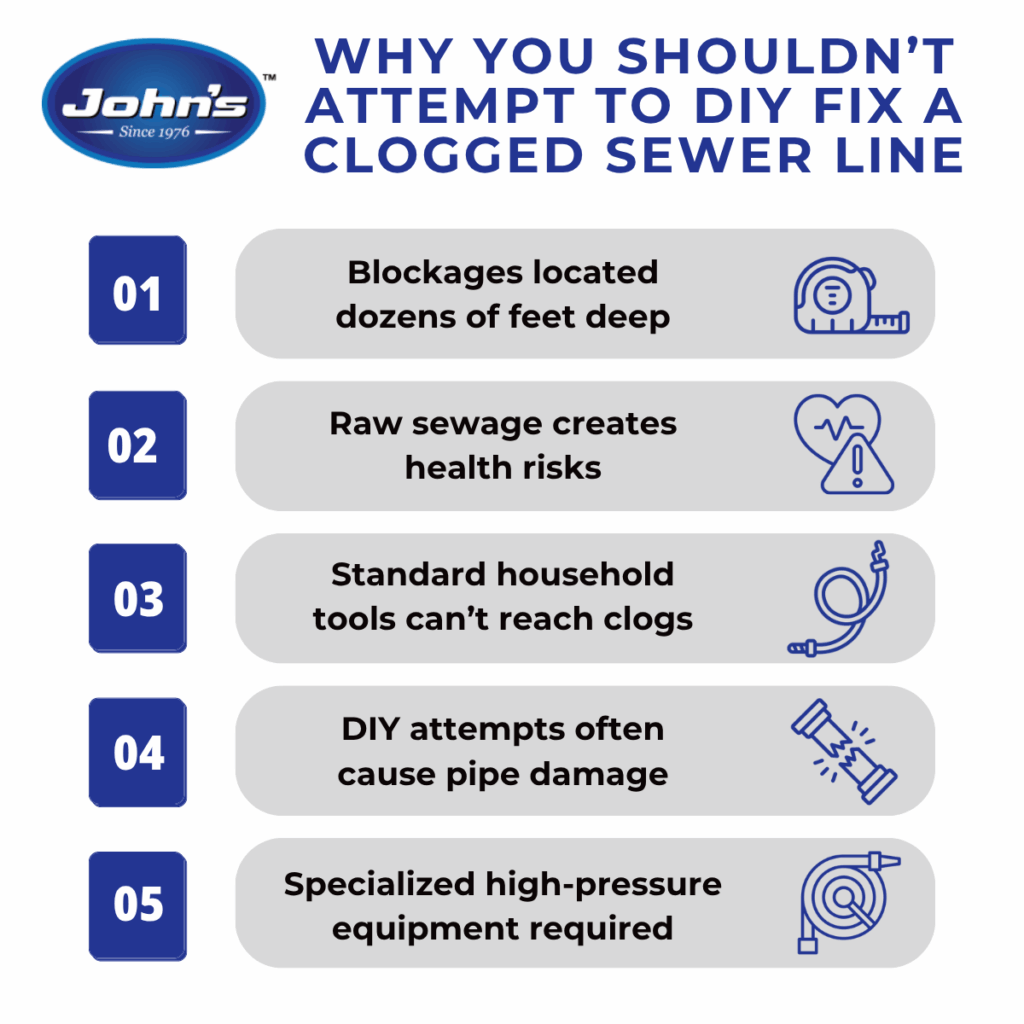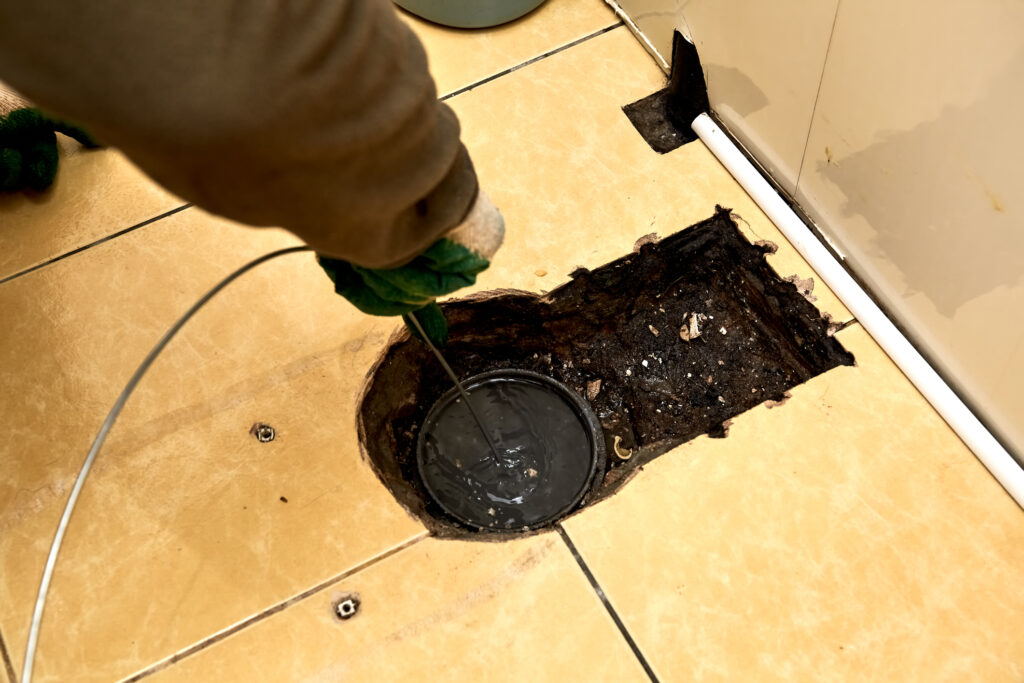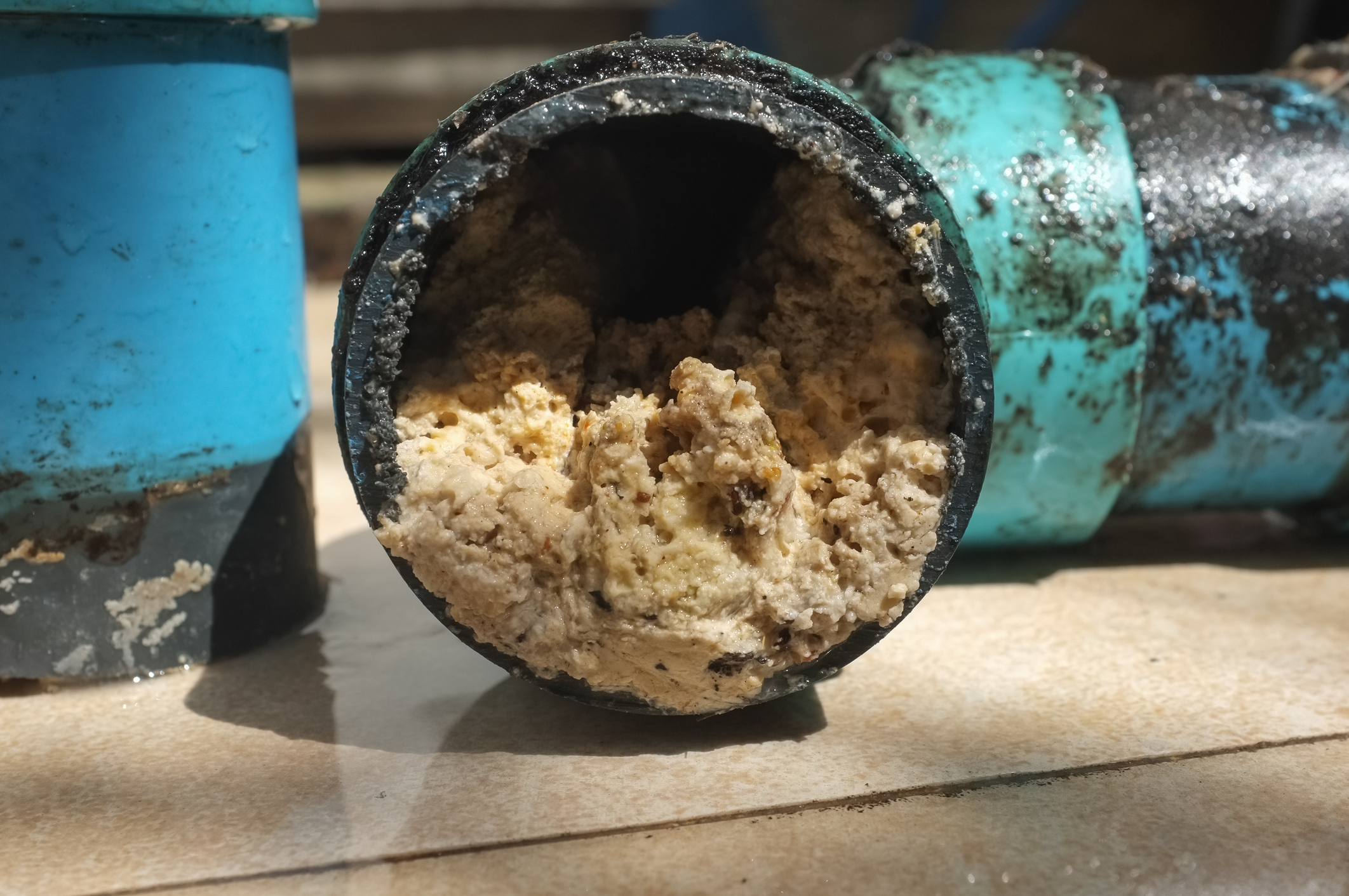The Short Answer: A clogged sewer line requires professional attention due to the complexity and depth of the blockage. While homeowners can handle regular drain clogs with simple tools, sewer line clogs need specialized equipment and expertise to fix safely and effectively.
When your sewer line is clogged, you’ll notice tell-tale signs like multiple slow-draining fixtures, gurgling toilets, or sewage backing up into tubs and sinks. These symptoms occur because wastewater can’t properly flow through the main sewer pipe, causing backups throughout your home’s plumbing system.
A blocked sewer line isn’t just inconvenient – it can lead to extensive water damage, unhealthy sewage overflows, and costly repairs if left unaddressed. Unlike regular drain clogs that homeowners can often tackle themselves, sewer line blockages require professional intervention with specialized tools and techniques to clear stubborn obstructions like tree roots and built-up debris.
In this guide, we’ll explore the warning signs of sewer line clogs and explain why professional cleaning methods are essential for safely and effectively resolving these complex plumbing issues.
We’ll cover:
- Warning signs and causes
- Why professional help is necessary
- Professional cleaning methods
- Preventive maintenance tips
Understanding Sewer Line Clogs
Main sewer line clogs are one of the most common plumbing issues homeowners face. A clogged sewer line can lead to serious property damage if not addressed quickly. Let’s examine what typically causes these sewer line clogs and how to spot the warning signs early on.
Common Causes of Sewer Clogs
Main sewer line clogs rarely happen overnight. They typically develop over time due to several factors:
- Tree roots are one of the most frequent culprits. Tree roots naturally seek out water sources and can break into sewer pipes through tiny cracks, growing larger over time and causing major blockages. These roots act like nets, catching debris and creating stubborn clogs.
- Grease and fat buildup occur when people pour cooking oils down their drains. While liquid when hot, these substances cool and solidify in drain pipes, collecting other debris and gradually narrowing the pipe’s diameter until water can barely flow through.
- Foreign objects often end up in sewer lines, from kids’ toys to “flushable” wipes (which aren’t really flushable). These items can get stuck in pipes and create blockages that catch other debris.
- Pipe scale and mineral buildup happen naturally over time, especially in areas with hard water. These deposits gradually narrow pipes, making them more prone to clogging with normal use.

Signs Your Sewer Line is Clogged
Here are the most reliable indicators that you’re dealing with a main sewer line clog:
- Multiple slow drains are often the first sign. Toilets, sinks, or tubs begin draining slowly or backing up, especially on lower floors. If using one fixture causes another to back up (like flushing a toilet makes water rise in your shower), that’s a clear sewer system warning.
- Gurgling sounds from drains, toilets, or pipes mean air is trapped in the line, often due to a developing clog. Pay attention to these sounds when using any plumbing fixture.
- Foul odors inside your home or around your yard usually indicate a serious clog is forcing gases back through your drains. You might notice these smells first in basements or coming from floor drains.
- Lawn changes like unusually green or soggy patches in your yard may mean raw sewage is leaking from a clogged or damaged line. You might also notice indentations or sunken areas where the line runs through your property.
Can You Unclog a Sewer Line Yourself?
While homeowners can successfully clear many regular drain clogs using plungers, drain snakes, or simple chemical solutions, sewer line clogs present a completely different challenge that requires professional expertise. Regular drain clogs typically occur close to fixtures and involve simple blockages like hair, soap buildup, or small foreign objects that can be reached with basic tools.

Sewer Line Clogs Require Professional Attention
Sewer line clogs are much more complex and potentially dangerous to address. These blockages often occur deep within the main sewer pipe, sometimes dozens of feet from any access point, making them impossible to reach with standard household tools. Sewer line clogs frequently involve stubborn obstructions like extensive tree root systems, hardened grease buildup, or collapsed pipe sections that require specialized high-pressure equipment to remove safely.
Additionally, working with sewer lines involves exposure to raw sewage, which poses serious health risks and requires proper safety equipment and training. Attempting DIY repairs on sewer lines can also lead to pipe damage, flooding, or personal injury. For these reasons, sewer line clogs should always be handled by licensed professionals who have the specialized tools, expertise, and safety equipment necessary to diagnose and resolve these complex issues effectively.
Professional Cleaning Methods
When DIY methods aren’t working, professional plumbers have specialized tools and techniques to tackle stubborn main sewer line clogs. Here’s what you can expect when you call a professional plumber to clear your sewer line.
Video Inspection Process
When dealing with a clogged sewer line, professional plumbers start with a video inspection. This technique uses a specialized camera attached to a flexible cable that’s fed into your sewer pipe. The camera sends real-time footage to a monitor, allowing plumbers to see exactly what’s causing the clog and where it’s located.
Video inspection helps identify common issues like tree roots, pipe cracks, or built-up debris. The camera can inspect drain pipes from 2 to 10 inches in diameter and reach up to 400 feet into the main sewer line. A transmitter in the camera helps locate problems from above ground, which means less guesswork and precise repairs without unnecessary digging.
Professional Solutions

Once the problem is identified, plumbers use several methods to clear the blockage. Water jetting is one of the most effective drain cleaning services, using high-pressure water (around 4,000 PSI) to blast away clogs and clean pipe walls. The powerful water stream removes everything from grease buildup to tree roots while scraping away mineral deposits that can narrow the pipe diameter.
For less severe clogs, mechanical cleaning with a drain snake or plumbing snake might be sufficient. These tools can break up blockages and pull out debris, though they’re not as thorough as hydro-jetting for complete sewer line cleaning.
Repair options depend on the video inspection findings. Minor issues might only need cleaning, while serious damage could require sewer pipe repair or replacement.
Costs vary significantly:
- Basic drain snaking typically runs $100-300.
- Hydro-jetting usually costs $350-600.
- Complete pipe replacement can range from $3,000 to $7,000, depending on the length and location of the pipe.
Prevention
Preventing sewer line problems is always better than fixing them. Start by scheduling regular maintenance of your sewer system every 18-24 months. This helps spot potential issues before they become major sewer line clogs that require emergency service.
To prevent drain clogs:
- Never flush items like paper towels, feminine hygiene products, or flushable wipes down toilets.
- In the kitchen sink, avoid putting grease, coffee grounds, and fibrous foods down the drains.
- Watch for warning signs like gurgling sounds, slow drains, or unpleasant odors – these often signal developing sewer line issues that need attention.
For any sewer line issues or recurring backups, don’t wait to call a professional plumber. Licensed plumbers have specialized equipment like video cameras and high-powered drain cleaning services that can clear stubborn blockages safely and effectively.
Our team of expert plumbers at John’s Sewer & Drain Cleaning is available 24/7 to diagnose and fix your sewer line problems. Contact us today for a free inspection and quote to keep your plumbing system flowing smoothly.

